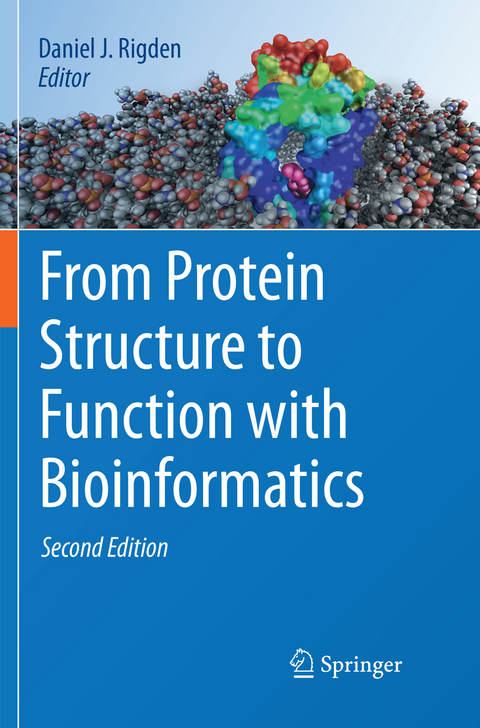
From Protein Structure to Function with Bioinformatics
Springer (Verlag)
978-94-024-1482-0 (ISBN)
The book is split into two broad sections, the first covering methods to generate or infer protein structure, the second dealing with structure-based function annotation. Each chapter is written by world experts in the field. The first section covers methods ranging from traditional homology modelling and fold recognition to fragment-based ab initio methods, and includes a chapter, new for the second edition, on structure prediction using evolutionary covariance. Membrane proteins and intrinsically disordered proteins are each assigned chapters, while two new chapters deal with amyloid structures and means to predict modes of protein-protein interaction. The second section includes chapters covering functional diversity within protein folds and means to assign function based on surface properties and recurring motifs. Further chapters cover the key roles of protein dynamics in protein function and use of automated servers for function inference. The book concludes with two chapters covering case studies of structure prediction, based respectively on crystal structures and protein models, providing numerous examples of real-world usage of the methods mentioned previously.
This book is targeted at postgraduate students and academic researchers. It is most obviously of interest to protein bioinformaticians and structural biologists, but should also serve as a guide to biologists more broadly by highlighting the insights that structural bioinformatics can provide into proteins of their interest.
Daniel Rigden is a Reader in post-genomic bioinformatics in the Institute of Integrative Biology. His interests span the broad relationships between protein sequences, structures and functions and how these evolve with time. As such, he applies a wide range of bioinformatics tools to diverse proteins of interest. This leads to interesting collaborations acorss the Institute and more broadly. A current prime interest is solution of crystal structures by Molecular Replacement using unconventional protein models, implemented in the program AMPLE.
Preface.- Ab Initio Protein Structure Prediction.- Protein structures, interactions and function from evolutionary couplings.-Fold Recognition.- Comparative protein structure modelling.- Advances in computational methods for transmembrane protein structure prediction.- Bioinformatics approaches to the structure and function of intrinsically disordered proteins.- Prediction of Protein Aggregation and Amyloid Formation.- Prediction of biomolecular complexes.- Function Diversity within Folds and Superfamilies.- Function prediction using patches, pockets and other surface properties.- 3D Motifs.- Protein Dynamics: From Structure to Function.- Integrated servers for structure-informed function prediction.- Case Studies: Function Predictions Of Structural Genomics Results.- Prediction of protein function from theoretical models.- Index.
| Erscheinungsdatum | 27.08.2018 |
|---|---|
| Zusatzinfo | 75 Illustrations, color; 11 Illustrations, black and white; XV, 503 p. 86 illus., 75 illus. in color. |
| Verlagsort | Dordrecht |
| Sprache | englisch |
| Maße | 155 x 235 mm |
| Themenwelt | Mathematik / Informatik ► Informatik ► Theorie / Studium |
| Informatik ► Weitere Themen ► Bioinformatik | |
| Medizin / Pharmazie | |
| Naturwissenschaften ► Biologie ► Biochemie | |
| Naturwissenschaften ► Biologie ► Genetik / Molekularbiologie | |
| Naturwissenschaften ► Biologie ► Mikrobiologie / Immunologie | |
| Schlagworte | algorithms • Bioinformatics • classification • Databases • Gene Ontology • Secondary structure |
| ISBN-10 | 94-024-1482-7 / 9402414827 |
| ISBN-13 | 978-94-024-1482-0 / 9789402414820 |
| Zustand | Neuware |
| Haben Sie eine Frage zum Produkt? |
aus dem Bereich


